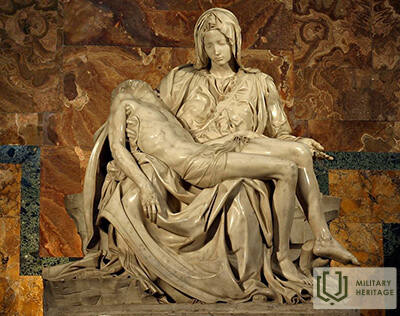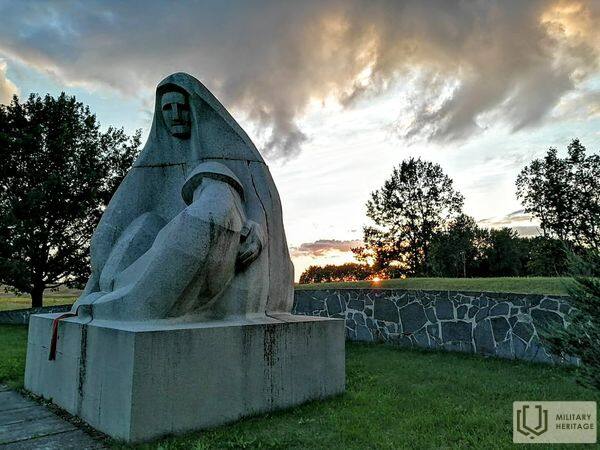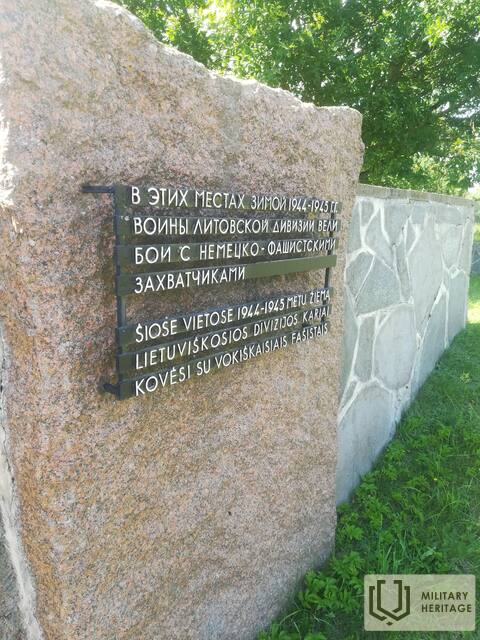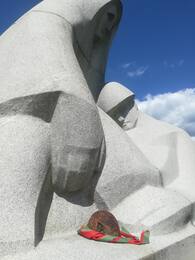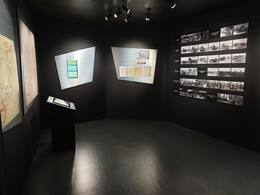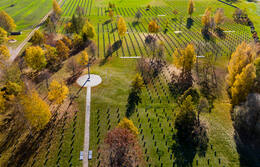Pieta or "Māmuļa" Memorial Ensemble in Nīkrāce
Pieta, or Mammy, is a well-known motif in European culture and art, and was also used in Soviet times.
The Nīkrāce Monument is also popularly known as the "mummy". The monument was sculpted in 1979 by sculptor L. Rezevska.
Why is its name PIETA? - Pietà is a Renaissance sculpture by the Italian artist Michelangelo, located in St Peter's Basilica, Vatican City. It is the only work signed by Michelangelo.
Related timeline
Related objects
Red Army Soldiers Memorial Site "Pieta" in Nīkrāce municipality
The Soviet Soldiers' Cemetery is located on the Skrunda - Embute - Priekule road, which is situated on a highland between the two rivers Dzelda in the south and Koja in the north. More than 3000 fallen are buried there.
World War II battles
The Red Army launched an offensive operation from 27 October 1944, now known as the 1st Kurland Battalion, with the aim of destroying the German army group "North", later renamed "Kurland". By 5 November, the Soviet 61st Army and parts of the 6th Guards Army and the 4th Shock Army reached the River Zeld and some units of the 5th Guards Panzer Army captured the bridgeheads on the north bank of the river. Before the next attack, the 2nd Guards Army of the 1st Baltic Front was moved into this sector to reach the Skrunda-Liepaja railway line. After the initial invasion was achieved, the attack towards Kuldīga would be continued by the 5th Guards Panzer Army.
The start of the 2nd Battle of Courland was delayed by weather conditions and only began on 19 November. The Red Army made its greatest gains in the vicinity of what is now the Cemetery of the Brothers and by the evening of 24 November the 1st and 60th Rifle Corps had captured the placdarm on the north bank of the River Koj. However, the Red Army's success ended there. The German Army Group North anticipated the direction of the Soviet attacks and concentrated appropriate forces here, including two panzer divisions.
On the evening of 26 November 1944, the Red Army attacks were halted and no further attempts were made to destroy the German forces in Courland until the end of the Second World War. In the battles that followed, the task was to prevent the German army from being evacuated from Courland.
Ezere local history repository “Muitas Nams” (Customs House)
The Ezere Customs House is located in Ezere near the Saldus-Mažeikiai highway at the Latvian-Lithuanian border. The act of surrender of the German Army units ‘Kurzeme’ (Kurland) surrounded in the so-called ‘Courland Pocket’ was signed in this building on 8 May 1945. It is believed that World War II actually ended in Ezere. The customs house has an exhibit covering the events of the end of World War II and exhibits detailing the history of Ezere parish from ancient to modern days. In the morning of 7 May 1945, the commander of the Leningrad Front, Marshal L. Govorov, sent an ultimatum to the command of the army group ‘Kurzeme’ to lay down arms. The act of surrender was signed by the involved parties on May 8 and it detailed the procedure of surrender, weapons collection points, documents and information to be submitted and other practical measures.
Saldus German Soldiers' Cemetery
Saldus German soldier's cemetery is located on the Saldus-Ezere highway. Around 25,000 German soldiers, as well as some Latvian legionnaires, were reburied in the 8-hectare cemetery. Reburial has been taking place since 1997.
From May 1 to October 1, an exposition on the Battle of Kurzeme can be seen in the memorial room. During this period, the memorial room is open on weekdays from 9:00 a.m. to 5:00 p.m., on Saturdays and Sundays the cemetery also has a tour guide. The registers of soldiers buried in Saldus German soldiers' graves and fallen soldiers throughout Latvia are also available.




